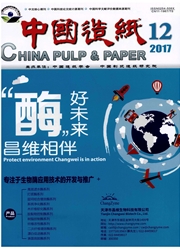

 中文摘要:
中文摘要:
在Lepoutre经典涂层固化模型基础上,通过假设涂层表面形成滤饼层和定义一个胶乳变形融合浓度(LCC),提出了一个能够更完善地描述涂层固化过程的新机理。新机理认为在涂料固化初期,水分在涂层表面被蒸发而固体被截留在悬浮液中导致表面涂层在FCC时形成了滤饼层。继续干燥使得滤饼厚度由表向里增加,直到整个涂层在LCC时形成一个凝胶性的松散毛细管网络。当固含量大于LCC后,涂层中的所有水分都被限制在粒子形成的毛细管中,水分的持续蒸发导致滤饼中粒子间的间距(毛细管孔径)缩小和毛细管作用力增加。毛细管力使可变形性胶乳与颜料粒子黏合在一起,或者使胶乳粒子相互融合成膜。新机理的进一步验证将为我国造纸业开发新型节能涂料配方和高分子化学工业开发新型高效胶黏剂提供理论支持。
 英文摘要:
英文摘要:
A new mechanism that better describes the consolidation of the structure of latex-pigment coatings, based on Lepoutre's classic coating consolidation theory, has been proposed by assuming filter cake formation at the coating surface, and by defining the Latex Coalescence Concentration (LCC). The new mechanism considers that, since water is evaporated at the coating/air interface while the solids, including particles and soluble polymers, are "filtered" out to remain in the coating suspension, a filter cake is formed at the coating surface at the FCC. As the drying process continues, "free water" within the coating will be drawn to the surface by capillary flow, and the filter cake will become thicker, until a loose, "gelling", three-dimensional capillary network is formed within the whole coating (LCC). Since all water within the coating after LCC is hold by the capillaries formed with pigment and/or latex particles, further drying will cause the capillaries to shrink, and the capillary force to increase. Increased capillary force will in turn cause the "deformable" latex particles to deform, resulting in latex adhering to pigment particles, or the binder particles to adhere to each other to form latex film. New experiments are still needed to better understand the coating consolidation processes.
 同期刊论文项目
同期刊论文项目
 同项目期刊论文
同项目期刊论文
 期刊信息
期刊信息
